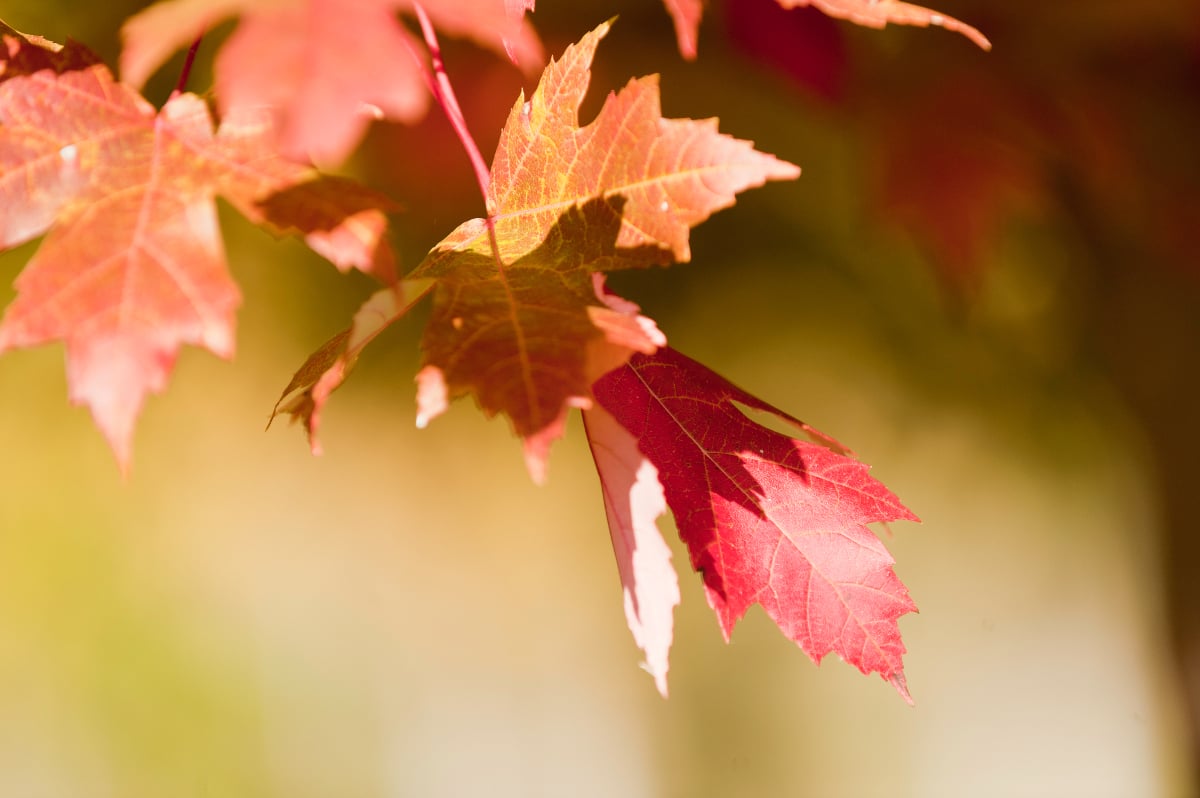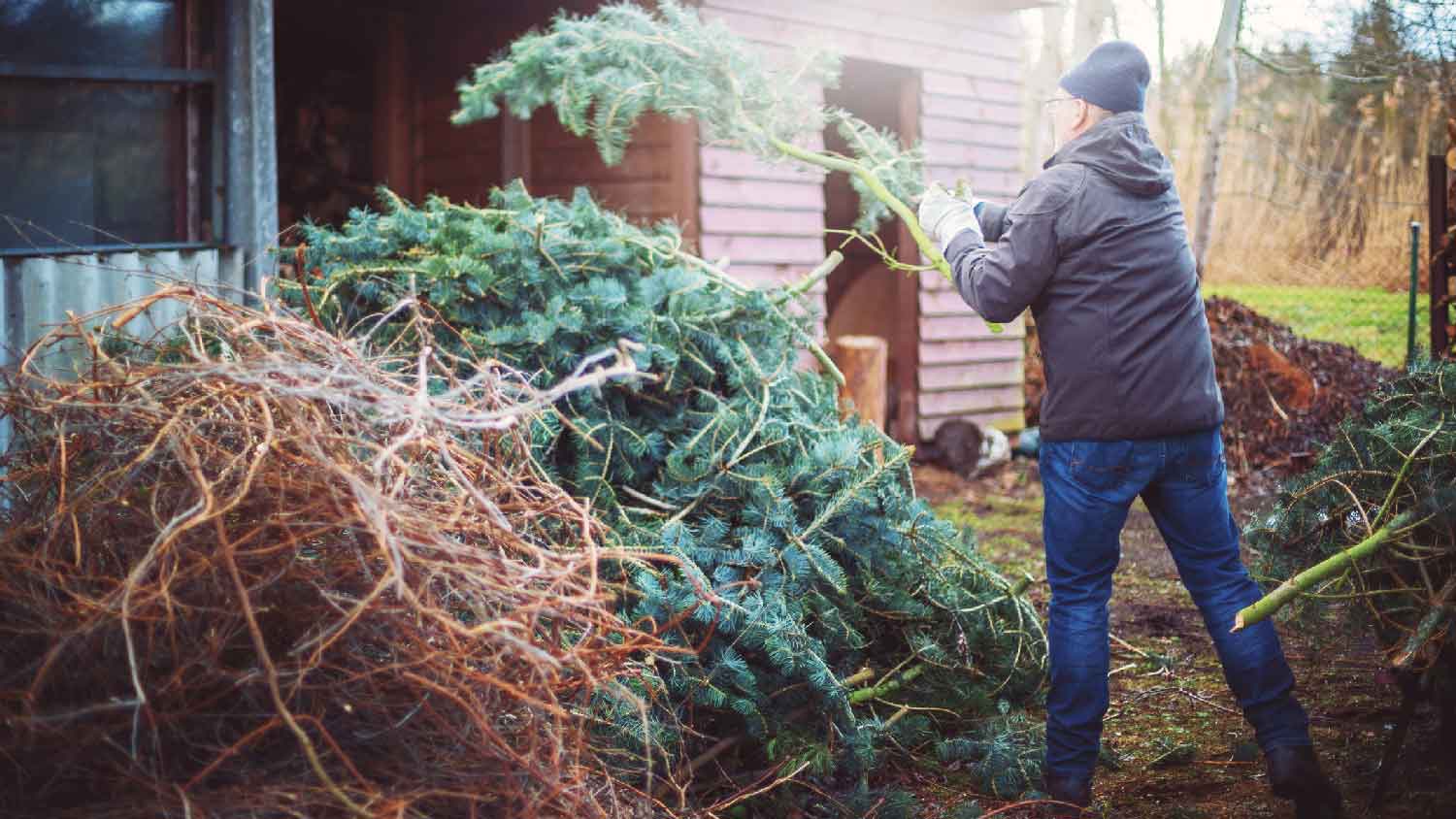The Meaning of Early Fall Foliage: 4 Preventative Steps to Take for Healthy Trees
Try these 4 steps to boost tree health before fall


Fall foliage is caused by a seasonal decline in the pigment chlorophyll.
Trees that change color too early may be stressed.
Insects, disease, and drought can all cause early fall foliage.
Vibrant fall colors are one of the best parts of autumn. We expect to see beautiful red, orange, and gold foliage in many cities across the country. But, the presence of fall foliage has a different meaning if it arrives well before the summer is over.
Early fall foliage likely means that trees are experiencing stress. If you see this in your own backyard, your trees may be asking for help. Let’s consider what causes stress, how to identify a sick tree, and four steps you can take to keep your trees healthy.
What Is Fall Foliage?
During the fall season, the leaves on trees (also known as foliage) begin to change color, turning from green to stunning hues of orange, red, and yellow. This beautiful phenomenon is often called “fall foliage.”
The arrival of fall brings shorter days and cooler temperatures, which signals leaves to stop making food. This results in the gradual decrease of chlorophyll, a pigment in plants that gives them their green color. Without the presence of chlorophyll, leaves begin to sport the vibrant, eye-catching colors that so many deem as the hallmark of fall.
After you’ve enjoyed the spectacle and the leaves have fallen onto your yard, you can hire a leaf removal company near you to help with seasonal clean-up.
Why Tree Leaves Change Color Before Fall
Trees that don’t get enough water, are plagued by insects or diseases, or are stressed for other reasons may stop producing chlorophyll, causing them to change color before the summer season ends.
Tree Leaves Turning Red in Summer
The rich red color of leaves is caused by pigments called anthocyanins. When tree leaves turn red in the fall, it’s a good thing, as anthocyanins protectively extend the life of the leaves. However, your leaves turning red in the summer usually mean they’re under some sort of stress. Common stressors include insects, disease, drought, lack of nutrients, soil compaction, and more.
Avoid Long-Term Tree Damage
A hot summer can take its toll on trees for years to come. Even after recovering, trees may still be weak and need extra attention for the remainder of the season. Check trees now to help them make it through the remaining hot days.
How to Identify a Sick Tree
You can identify a sick tree by conducting a thorough examination of all its parts. Here are some telltale signs to look out for.
Trunk and bark: Closely examine the tree’s trunk and bark for any signs of decay or rotting. Vertical cracks, stripped layers of bark, and fungal growth can all be signs of an unhealthy tree.
Roots: While the roots are least vulnerable since they’re hidden underground, it’s still important to check for any visible signs of damage such as decay or fungi, severed roots, soil compaction, and small branches sprouting from the base of the tree.
Branches and twigs: A healthy tree should have an abundance of leaves and strong branches. On the other hand, a tree with dead or weak branches could be a sign of disease or pests.
Leaves: Not only should leaves be the right color for the season, but they should also show no signs of wilting or drooping. Leaf spots, patches, and holes can all indicate stress and sickness.
4 Steps for Healthy Trees
Take care of your trees now by following these four easy steps below, so you can enjoy the fall color well after summer ends.

1. Feed
Protect trees from disease, insects, and unpredictable weather by giving them the nutrients they need. As long as your trees aren’t experiencing drought, you can apply a slow-release fertilizer according to directions.
2. Hydrate
Water trees once a week from March until October, and twice a week during periods of no or little rain. Only water the area under the tree’s branches, known as the drip zone. Avoid directly irrigating the trunk.
3. Check
Make sure you’re not overwatering by using the “soup can” trick. Place an empty soup can near the tree inside the sprinkler pattern and run the sprinkler very slowly over several hours until 2 to 3 inches has collected in the can.
4. Mulch
Apply wood chips, shredded leaves, pine needles, or compost to help trees maintain moisture where they need it—their roots. Spread mulch in a wide circle, no more than 3-inches deep, around the tree to conserve water. Pull mulch back from the trunk of the tree like a donut, not like a volcano.
Think your trees are stressed? Make an appointment with a certified arborist to learn how to care for, protect and enhance the vibrant color of fall for seasons to come.
Bob Meoak contributed to this piece.
Frequently Asked Questions
Fall foliage is caused by a lack of chlorophyll, a pigment that gives leaves their green color. Autumn brings shorter and cooler days which allows for other pigments, like carotenoids and anthocyanins, to reveal beautiful fall foliage.
During the fall, you’re likely to see foliage in stunning shades of orange, red, yellow, and brown. These colors emerge because of a seasonal decline in the pigment chlorophyll that makes leaves green.
Peak fall foliage refers to the time period when leaves are the most vibrant and rich in color. Typically, peak times are the second and third week of October. However, peak times vary based on where you live and your local weather conditions.














